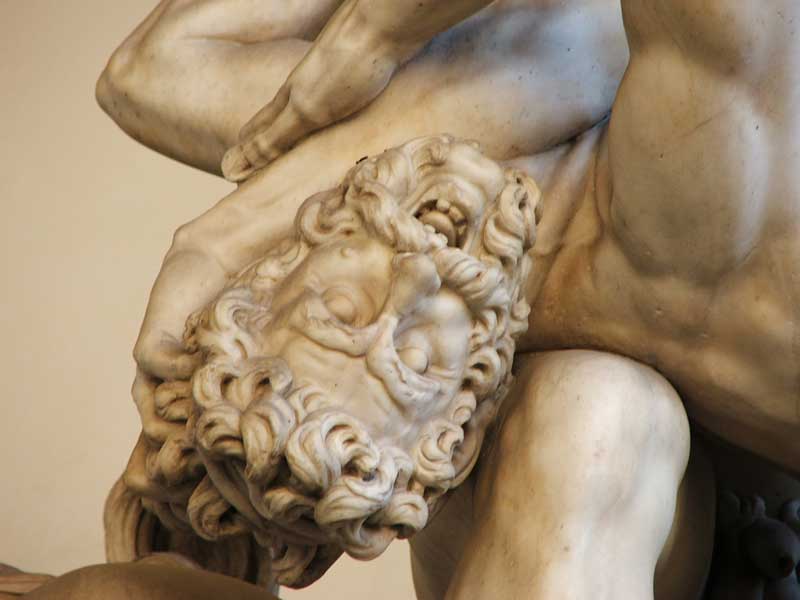
In Greek mythology, Heracles or Hercules was the son of Zeus and Alcmena, the wife of Amphitryon. He was a paragon of masculinity, famous for his enormous physical strength and his numerous adventures. After his victory over King Eurytus at Oechalia, as he was proceeding towards his home with his new wife Deianeira, they reached the shore of the River Euenus, which was difficult to cross for its currents.


While Heracles was confident about crossing the river in his own ability, he was worried about his wife and asked Nessus, the ferryman for his help. Nessus agreed to help them and carried the beautiful woman across the river on his back.
However, the beauty of Deianeira inflamed him with passion and he attempted to carry her away. Heracles was keeping watch on them from the other side of the river and as he sensed the intention of the ferryman and heard the shouts of his confused wife, he picked up his bow and slew Nessus with a Hydra-poisoned arrow.
The story did not end there, However, what happen after the death of Nessus, is another story.

The Flemish sculptor Giambologna, who created the marvelous work the Rape of the Sabine Woman, completed the marble group of the Hercules and the Centaur Nessus in 1599.The sculpture is basically characterised by the great plastic force expressed by the powerful, almost elastic twist of the body of the centaur Nessus, bent by the enormous force of Hercules.
In fact, greatly influenced by Michelangelo, but an expert in his own mannerist style, the Hercules and the Centaur Nessus created by Giambologna, exhibit a focus on beauty rather than emotion. Under the influence of Georgio Vasari, considered the ideological foundation of art-historical writing, Giambologna became one of the Medici's most important court sculptors.

The magnificent sculpture, carved impressively from a single block of marble was first installed on the Canto dei Carnesecchi in Florence. Later, it was moved under the loggia of the Uffizi, on the southern side and then on the little square near the Ponte Vecchio, on the left bank of the Arno.
Finally, in 1812, it found its definitive seat in the open-air gallery Loggia dei Lanzi on the Piazza della Signoria in Florence, among the other famous marble occupants of the square.
